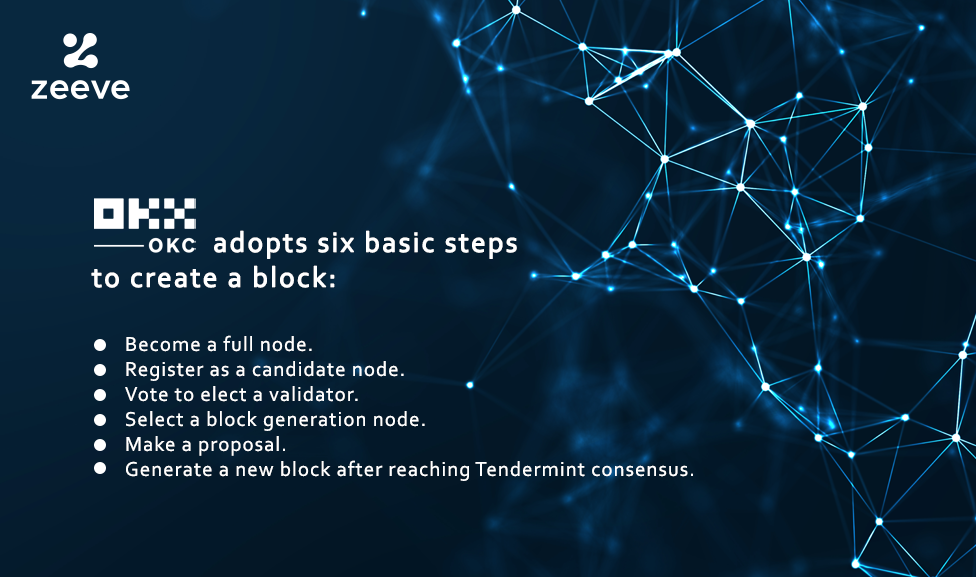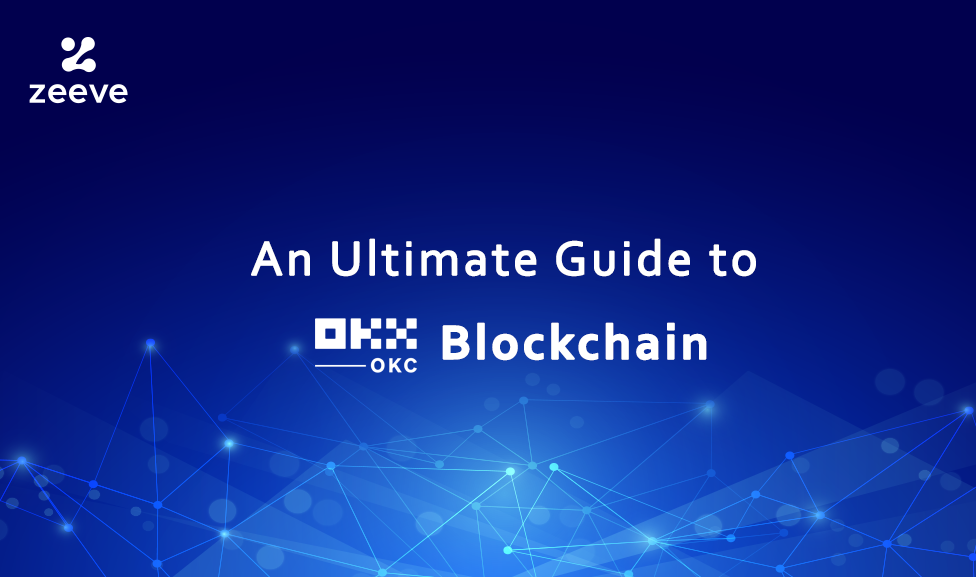The application and the network of blockchain-powered industries are growing at a fast pace. Presently, there is a multichain landscape. Therefore, cross-chain technology is essential to make interactions between the assets and the data & for the broadening of decentralized platforms.
Cross-chain means enabling transactions between various blockchain. It lets the different blockchain networks have a conversation with each other. information exchange, collaboration & realization of asset transfer between different platforms.
An ecosystem with similar values is OKC, developed by OKX the world’s second-largest crypto exchange in terms of trading value A safe and efficient DeFi structure is something that OKC (OKX Chain) is known for. OKC is an alternative to all the Layer-1 blockchains. In this blog, we will know more about OKC or OKX Chain, its applications, and its advantages.
More About the OKX Chain
OKC (OKX Chain) is one of the most reliable, fast, and affordable blockchain. The chain is built on Cosmos SDK and Tendermint. In addition, it is smart contract-enabled and is optimized for trading. The network has 2000 transactions per second and a minimal cost. OKC is a high performance, EVM-compatible and is the next-gen decentralized metaverse application.
OKC has an all-in-one Web3 interface. The smart contract-enabled blockchain is mainly optimized for interoperability and maximized performance. The blockchain has a cryptocurrency known as OKT.
It has a delegated-proof-of-stake (DPoS) mechanism, which means that the OKT holders will be able to delegate crypto to the validators. Cosmos is essential for Inter-Blockchain Communication. The architecture is Tendermint which further improves the communication process.
OKT – The Token of OKX Chain
The native token of the OKC network is the OKT. The tokens in the OKC genesis block are all allocated to OKB holdings. The token is a carrier of value for the ecosystem, and the value determines how it will be used for applications of DEX and DeFi.
Web3 on OKC
The OKX supports interoperability and has an all-in-one multi-chain Web3 interface. The secure and programmable smart contract platform is for next-gen Web3 applications.
OKX Web3 wallet is a multi-chain wallet and supports all of the mainstream chains. It supports both EVM and non-EVM chains. The users can use dApp easily with the wallet. With more than 200 million address labels, the KYT system does continuous risk monitoring & alerts the users.
OKC’s operation process
The consensus algorithm is followed by Tendermint (BFT-DPOS), and they follow a few basic steps to generate a block. First of all, the token holders need to become full nodes on the distributed blockchain network. The full node will register as a candidate after they pledge a certain number of tokens.
There are nodes ranked in the top 21 in the election to become validators in the next cycle. When the election is completed, the system calculates corresponding voting weights based on the votes collected by 21 nodes. A random algorithm is run to select block generation nodes. Further, these chosen nodes work to generate blocks according to the Tendermint consensus protocol.
After the two stages of voting, pre-vote and pre-commit. The selected block producer monitors and collects the transactions on the entire network and then assembles a new block. This new block is known as the proposal block.
Proposal Block & Function of Tendermint
After the broadcast of the proposal block, the validators have to read and verify the transactions. After verifying, the pre-vote message is shown. The pre-commit stage will begin if the votes approving the “proposal block” is two-thirds of the total vote. If the votes received are more than two-thirds then finally a new block is created.
In case the proposal block goes offline, the next validator will become the block producer if the proposal block goes offline. Thus, the voting process will start again.
Tendermint introduces a locking mechanism which means — a validator pre-commits a block and has to pre-vote to the same block. Basically, the validator is locked with the block. The move is essential to avoid any conflicts in the network.

Applications on OKX Chain
Low transactions and faster settlements make the OKC network great for many applications. Major applications of the OKX chain are:
DEX
DEX is the swapping protocol that automates the market and involves users in pooling assets to facilitate trading. The liquidity in these pools earns the contributor a share of the trading fees. The DEX is one of the popular ways to generate passive income on crypto holdings. OKC hosts BXH, Transit Swap, and Cherry Swap. There are transparent trading rules & that allows users to control their assets.
DeFi
DeFi refers to financial smart contracts, DApps, and financial protocols built on blockchain. It is mainly discouraged among users due to regulatory risks. However, OKC has a low-cost, and almost-instant transaction settlement. OKC’s Jumpstart Mining initiative permits farming DeFi tokens while supporting your chosen projects by staking OKB, OKX’s ecosystem token.
Gaming
Presently, GameFi is one of the promising sectors, but there was a time when it was not so popular due to the high fees. With time the monetization of the gameplay has become easy and economically feasible. The interoperability makes the developers and the users more inclusive. Earlier, gaming was a closed ecosystem, but now gamers can monetize play-to-earn games. Recently, the game candy club integrated with the OKX Chain. The players can run a full node and earn rewards in crypto.
NFT
In the OKX Web3 portal, you will find the NFT marketplace and a trading platform as well. As you know, the NFT isn’t only about art; it includes many items, such as event tickets, domain names, and in-game items. It allows the creation and trading of NFTs across different blockchains & platforms. OKX marketplace runs across Ethereum, Solana, Polygon, BSC, and many other prominent networks.
Trading
In July 2022, OKX brought Tether to the OKC blockchain and offered free withdrawals. This will provide smarter, more efficient, and affordable on-chain trading for users. In Sep 2022, OKC also integrated with the leading NFT domain, Unstoppable Domain. Currently, the aim is to allow users to send and receive tokens from more than 20 public chains.
Advantages of the OKX Chain
Along with the wide range of applications, here are some of the major perks the OKX chain offers:
Better Performance
In the Tendermint & DPoS consensus, a TPS of 5000 has been achieved. Thus, more contract interactions at a very low cost. The OKC allows a wide array of fiat currencies to open accounts. And has a broad suite of offerings and educational resources.
Compatibility-enhanced
OKC is 100% EVM compatible, has a cosmos ecosystem, and is IBC interoperable. Also, EVM supports the environment for smart contracts. OKC adopts EVM compatibility. Therefore, developers can now migrate their Ethereum Dapps to OKC.
Security First
OKC along with its decentralized architecture comprises of a powerful data analysis tool and contract audit service. OKX uses a cold wallet design in which private keys are stored offline. Those keys have no interaction with the internet.
Developer-Friendly
OKC is completely open-source. Along with that supports Oracle and has a developer-friendly community. The network is committed to creating a rewarding and diverse environment for developers. The scalability of the network is high. Therefore, developers can build and scale at minimal fees.
Community-based Governance
The chain is 100% open source. Every individual has the right to become a validator. The OKC users have a high degree of autonomy, and everyone can issue their own digital assets. There are a set of validators to maintain security in community-based operations.
Final Thoughts
In the future, the platform is focussing on preparing a heterogenous cross-chaining and will enhance the multi-directional circulation of value. The developer community will also feel similar to the OKX chain because the blockchain and crypto industry has already become standard. In addition, OKC takes the lead in terms of the degree of decentralization among other developed public chains. None of the participants, not even the developer, is allowed to control the OKX chain. The OKX CEO said,
“We are very confident in the technical strength of OKX. Throughout our extensive testing, OKC has shown very high performance with all the necessary elements of a decentralized public chain.”
With that being said, the future is for interoperability, and OKC will add immense value to decentralization. Want to know more about Zeeve adding support for OKC on the platform? Read our blog here.
Partner with Zeeve
Zeeve has been at the forefront of building Web3 infrastructure and more than 15,000 developers and Blockchain startups trust Zeeve for their critical web3 infrastructure. Adding OKC support to our existing infrastructure stack is just one more way we’re supporting developer success within the blockchain space.
Zeeve features a powerful set of APIs to build DApps for a plethora of use cases across industries including asset tokenization, NFTs, DEX, Stablecoins, etc. Zeeve supports Decentralized Finance (DeFi) space with decentralized storage, trusted nodes, and smart contracts.
To learn more about Zeeve, visit our Developer Center or join us on Twitter and Telegram






















